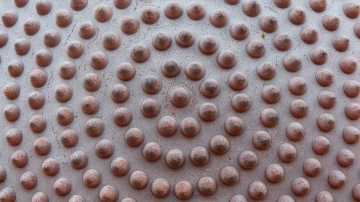We use first and third-party cookies for analytical and statistical purposes and to show you personalised advertisements based on a profile compiled from your browsing habits (e.g. pages visited). For more information, click on our Cookie Policy. You can accept all cookies by pressing 'Accept', you can reject all cookies by pressing 'Reject', or you can customize your choice by pressing 'Manage'.
The microchips PERTE mobilises the Spanish electronics industry: this is how it works.

When PERTE Chip is through, we will see microchip “ foundries”) in Spain such as those run by Intel or Samsung in the United States, South Korea and Taiwan, as well as companies capable of manufacturing mobile phones or computers Made in Spain. For years, many territories have aspired to become the European Silicon Valley. Now is the opportunity to materialise that aspiration with the most ambitious and longest-term project financed with European funds.
The pandemic, the crisis in Ukraine and the breakdown of the global supply chain have revealed weak points in the European economy: to the dependency in energy and manufacturing there is the added lack of autonomy in the field of semiconductors. The EU has just approved the so-called European Chips Act, and intends to use Next Generation funds help member countries to make up for lost ground to Asia.
More specifically, the aim is for Europe to reach a 20% share of the global semiconductor market by 2030. It currently holds a 10% share, but at the rate of growth of this industry reaching a 20% means quadrupling the current capacity.
The Strategic Project for the Recovery and Economic Transformation (PERTE) of Microelectronics and Semiconductors, also known as the PERTE Chip, was approved on May 24, 2022 by the Spanish government.
Ten other PERTE projects are already underway, but this is the most financially endowed. It almost doubles the second largest - energy (ERHA, 6.92 billion) -, and triples the PERTE funds for electric vehicles (VEC, 4.3 billion). In fact, the funds destined to PERTE Chip represent 40% of the total budget of this channelling mechanism for Next Generation funds.

The complex governance of PERTE: a special commissioner to manage the project
The complexity and ambition of this PERTE has led the Government to create a state-owned company for microelectronics and semiconductors called SEMYS (Spanish acronym), to manage the entire process, under the direction of Jaime Martorell, a prestigious technology manager with experience in Silicon Valley and former head of the old ATT factory in Tres Cantos (Madrid). Five million euros from the PERTE funds have been allocated to the operation of the company, reflecting the importance given to the governance of the project.
SEMYS will coordinate the dialogue with the industry, the autonomous communities, the city councils and all the other actors involved. A group of experts from academia, science and business has been created alongside.
In fact, the involvement of several ministries, from the Presidency to Education, Industry, Universities, Science, Finance and Transport, has also led to the creation of an interministerial working group, coordinated by the Vice President Nadia Calviño.
The complexity of the project means the industry needs to approach it from the hand of experts in the management of Next Generation funds, such as FI Group, the consulting firm specialising in European funds with which we work at Bankinter for our business customers.
When will the first PERTE Chip calls published?
The PERTE was approved in May with its corresponding technical report, but the regulatory framework and the different calls for proposals have not yet been published. The first calls are expected to go out in the first half of 2023 and the first 1,250 million euros budgeted by the Government will be mobilized.
SEMYS is expected to call on the industry to submit Manifestations of Interest, conveying the plans, needs and willingness of its members to participate in the calls, as is the case in other similar processes.
Although the different calls for proposals and the specific funding instruments have yet to be structured, two of the basic principles of European funding are public-private collaboration and the creation of consortia covering the entire value chain, where large companies act as drivers in partnership with SMEs, micro-enterprises and start-ups.
This is not a closed PERTE: one of its hallmarks is its flexibility and its ability to adapt to problems and new challenges. The timelines suggest that large factories could go live by the end of 2027.

How is a semiconductor produced? From design to manufacturing
One could say that a semiconductor is created when it is designed and finished when it is manufactured and assembled. In both processes, Europe is at a clear disadvantage compared to Asia and the United States.
Design
It is the phase where the architecture of the semiconductor is defined. This is where R+D+I becomes decisive and where intellectual property and electronic design software, the so-called EDA Tools (Electronic Design Automation), come into play. In this phase the United States carries significant weight. Although the model tends to make design and manufacturing increasingly interrelated, this is the pre-manufacturing phase of the project.
Manufacturing
Now it is the turn of the large semiconductor plants, known as foundries. Most of them are in Asia (South Korea and Taiwan) and it is at this stage -manufacturing- where the global industry is experiencing a bottleneck: production in all kinds of industries is paralysed due to a lack of microchips. In this phase, commodities (chemicals, silicon wafers, gases, etc.) also play a crucial role. Then encapsulation and assembly are carried out by other companies at a later stage.
Technology is moving towards increasingly smaller semiconductors and a five nanometer standard has been achieved. Samsung is currently considering a factory dedicated to sub-three nanometre chips, requiring an investment of 17 billion dollars. But the trend is towards a more flexible model where companies that design (fabless) subcontract factories and these, in turn, lend themselves to third parties. In fabless there is more room for SMEs and startups. Foundries, on the other hand, require the intervention of large companies. PERTE Chip promotes both kinds.
PERTE Chip's four strategic focuses:
PERTE starts from the foundations: priority is given to research, organisation and design. This is followed by the formation of consortia and the realisation of investments to set up the manufacturing plants and the rest of the industrial ecosystem.

The plan is built around four strategic focuses:
-
Strengthening scientific capacity. Endowed with 1.165 billion euros, this strategic focus is directed towards boosting research on state-of-the-art microprocessors (475 million), in particular RISC-V (Reduced Instruction Set Computing, an open standard architecture that has revolutionised the way semiconductors are designed), integrated photonics (150 million), where Europe ranks second in the world, only behind the US, and quantum chips (40 million), both optimisers and programmable simulators, which allow a multitude of simultaneous operations.
Also included is 500 million for Important Projects of Common European Interest (IPCEI) in microelectronics and communication technologies, of which 11 are already underway in Spain.
-
Design strategy. Endowed with 1.33 billion euros, it focuses on the first phase of the production of semiconductors. It will power the creation of cutting-edge chip design fabless and alternative architectures, with 950 million, and is aimed at producing microprocessors for RISC-V but also for Edge Computing, which accelerates the use of the cloud, the Internet of Things, Machine Learning and Artificial Intelligence, or even to adapt the automotive industry to 5G (autonomous driving).
It also opens a line of 300 million euros for the test pilot phase that allows these microprocessors to be validated, which will accelerate the time to market by shortening the lag between research and development and final manufacturing. The entrance of existing companies, and specifically SMEs, is expected in this phase.
This strategic focus also provides 80 million euros for the creation of a Spanish semiconductor training network, in line with the training centres foreseen in the European Chip Act. This will address the human capital deficit that is currently hampering the growth of the industry.
-
Construction of manufacturing plants. This is the cornerstone of PERTE, entailing a public investment of 9.35 billion euros that will enable the construction of the first Spanish semiconductor manufacturing plants. A preliminary feasibility study of the two types of factories will first be prepared:
- Sub-five nanometer chip foundries, with an injection of 7.25 billion. The vast scale of this project means it will take three years for the engineering and construction phase and a further two years for commissioning. The objective is that the first plant be operational by the end of 2027.
- Mid-range factories (more than five nanometers), with an investment of 2.1 billion euros. In the latter case, we are talking about the microchips that are in demand in the national industry today. PERTE proposes a massive manufacture of these semiconductors and that the first plant be ready before 2027.
-
Dynamisation of the ICT manufacturing industry. The PERTE plans to carry out an in-depth study on the ICT sector in Spain beforehand and assess how the entire value chain can be integrated. This strategic focus, endowed with 400 million, takes two directions: Firstly, it provides for the creation of a fund of 200 million to promote startups, scaleups and innovative SMEs in the national semiconductor sector.
Secondly, it seeks to boost the manufacture of electronic products in Spain. The aim is that at the end of the process we see computers, cameras, mobile phones or tablets both designed and made in Spain. The idea is that by boosting the national industry that consumes semiconductors a driver effect is exerted on the foundries, eating up a part of their production. Another 200 million euros are earmarked for this purpose.
Information obtained from webinar“ PERTE helps make your microelectronics and semiconductor company more competitive” organised by Bankinter's CFO Forum with the participation of:
- Emma Montserrat: Deputy General Manager and head of European Funds at Bankinter.
- Xavier Gomez Aparicio: Director of Digital Transformation at FI Group.

